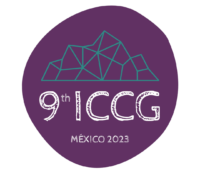Keywords: ecology, open data, free software, defense of territory, Central America, science. Abstract: We made a map of structural connectivity in Panama as a way to support the work of communities that defend their territory and that of environmental activists. This talk is about connectivity mapping methodology, open data, science outside of academia with activist goals, and the use of free software tools.
Panama, despite marketing itself internationally as a "carbon negative" country, is subject to various development pressures that destroy or threaten to destroy the country's forests. These threats and pressures include open-pit metal mining, large-scale hydroelectric plants and other energy infrastructure, privatisation of national lands, cattle ranching, highways, and large-scale tourism. The most important environmental struggles in the country in recent years have been carried out by indigenous peoples, but also by settler and mixed peasant communities that resist these pressures. A few years ago, a group of ecologists from Panama City identified the need to better understand the key points for the functioning of the Isthmus of Panama as a bridge of ecological connectivity tin America. The idea was to make a connectivity map that would support the environmental movement and the communities in defense of their territories with a tool that would demonstrate the value of forests with data and scientific language, something that in a country controlled by a highly mercantilist State is a significant challenge.
In this presentation I will share the methodology used for the preparation of this map and the process of interpreting and socialising the results. The production of a "structural" ecological connectivity map is possible with various sources of information and can work even in places with low availability of open data from the State. The process can be done entirely with free software. Computational power requirements can be adjusted based on available resources.
The structural connectivity modeling methodology involves the computational analysis of a cartographic layer that incorporates data on land use and human modification of the environment, including infrastructure and population density. What are the implications of this massive condensation of data? In what ways do you make "reality" on the ground visible or invisible?
The process of this map also opens questions about the creation of scientific knowledge outside the institutional sphere. The imagining of the objectives of the study and the process of interpreting the results incorporate the participation of different actors from the environmental movement in Panama. Other interesting points have to do with the use of scientific language and its tools, in this case biology and cartography, by people outside the formal academic environment.
The map is calculated for the national territory of Panama (with a 10km buffer along each border), which from a strictly ecological point of view does not make sense. In addition, the methodology does not take into account the heterogeneities in the territorial control of Panama by indigenous, rural and settler peoples. What are the tensions implicit in framing ecology studies to political entities?
Finally, our organisation reflects on the tools used for the processes and hence the use of free software. For us it is essential to be able to create methodologies that can be reproduced by anyone, despite the temptations and impositions of more comfortable, "free" tools or those financed by scientific or educational institutions. What does it mean to reflect on technologies and tools?
